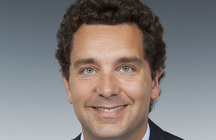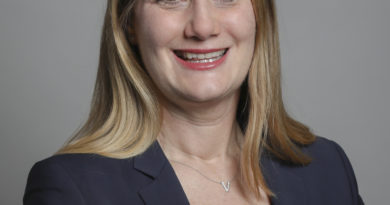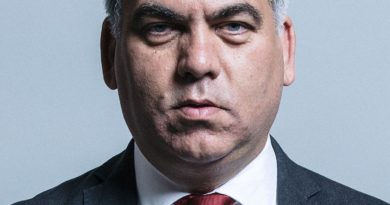Edward Timpson – 2014 Speech on Adoption Support
Below is the text of the speech made by Edward Timpson at Somerset House in London on 13 May 2014.
Thanks Sheila (Durr, Chair of the London Adoption Board), it’s good to be here.
Just a month ago, I was pounding the streets of London in the marathon, sporting a T-shirt with the words “I’d adopt” on it in the hope that if that got just a few people thinking about the possibility of offering a child a loving home, then it will have done the job.
Because, with 6,000 children – and around 800 in London alone – still waiting to be adopted, we must take every opportunity to bring them and prospective parents together – and to be there for them every step of the way.
And the good news is we’ve made really important progress this year.
Progress
The Children and Families Act is sweeping away many of the identified barriers to adoption and there’s been a much stronger focus on wider recruitment and better support for adopters.
And thanks to your hard work and dedication – for which I’m naturally hugely grateful – we can see this determined drive from government beginning to pay off.
Adoptions are at record levels following a 15% increase between 2011 to 2012 and 2012 to 2013. There’s also been a 34% increase in the number of adopter approvals.
Huge numbers – over 96,000 people in 12 months – contacted the First4Adoption online information service that we fund – and whose phone number was splashed all over my marathon T-shirt. And over 6,800 of these people went on to look at an adoption agency’s website – a vital next step to becoming an adoptive parent.
We’re already aware of one couple who have gone from contacting First4Adoption to being approved as adopters and having a child placed with them. It shows what can be done if we all pull in the same direction.
Three new voluntary adoption agencies also opened last month with a commitment to attract over 300 adopters and offer hope to more children – just the latest advance in a massive £217 million push to improve the system and boost recruitment.
And there have also been welcome developments on adoption breakdowns. Professor Julie Selwyn’s recent report showed that far fewer adoptions fail than previously thought – around 3% as opposed to a 20 or 30% breakdown rate.
But this very timely and important research also reveals that we need to do much more to support adoptive families who are struggling with the fallout from earlier abuse and neglect – something I’ve seen first-hand, whilst growing up with my own 2 adopted brothers.
So there’s a lot to do, but also a lot of great work that we can build on.
Good work in London
And, the reason I’m here today is because, in many ways, London is leading the way.
Research shows that Londoners – particularly single women and those aged over 40 – are more likely to adopt than people anywhere else in England. Londoners are also more likely to contact First4Adoption’s phone line than any other group.
And this is in the face of many of the same challenges as other parts of the country, particularly when it comes to finding matches for BME children.
As we know, black children spend, on average, a year longer waiting to be adopted than white children. I know that this is as unacceptable to you as it is to me – which is why, through the act, whilst continuing to recognise its clear validity as a factor to be taken properly into account, we’re ending the undue emphasis on finding an ethnic match between adopters and children whose chances of being adopted diminish with every day they have to wait.
And we can see some really excellent and innovative practice beginning to tackle this and wider recruitment challenges head-on.
Like Redbridge’s partnership with the children’s charity Coram, which, with its keen focus on reducing delays and on tracking children’s progress right through the process, has sent adoptions through the roof – by an astonishing 175% – and, in the process, attracted a wider pool of adopters.
Southwark too has excelled with its Find 40 Families campaign to attract BME adopters, driving up the number of adopters by 50% since its launch a year ago. A fantastic achievement.
Traffic to its website has also soared by 70% through a combination of work to raise awareness and myth-bust in local communities along with imaginative approaches to publicity – for example, by adding personal touches to its website, such as profiles of children waiting to be adopted.
We’re keen to do all we can to support these kind of inspirational ventures and see many more children gain from the wonderful gift of adoption.
Adoption reforms
Which is exactly what our adoption reforms aim to do, with a strong focus throughout on boosting recruitment as well as support for adopters at every stage.
There’s no question that the 2 things go hand in hand. People are far more likely to consider adoption if they’re confident they can count on good support – not just in the early days, but years down the line if needed, which I know from my own family, can often be the case.
So, through the act, through the new Adoption Support Fund, the new Adoption Leadership Board, chaired by Sir Martin Narey, as well as through the significant funding we’re injecting into the system, we’re simplifying and improving the process every step of the way. And, crucially, giving prospective parents much more choice and control over the support they get.
So what does this mean in practice? For adopters, it means they’ll get much clearer information about their entitlements, the same pay and leave rights as birth parents and will no longer face the ‘cliff edge’ of support provided while the child was in care suddenly being withdrawn.
We’re also giving them a more active role in finding a match by opening up the Adoption Register. We’ll start testing access to the register in the summer to see how this might help adoptive families come together much more quickly. And how it might highlight, at an earlier stage, what support is needed.
Adoption Support Fund
And this support is about to ramp up as families access much-needed therapeutic services through the Adoption Support Fund.
Last year, I announced that we’ll be contributing £19.3 million to help kick off this new fund. I launched this during a visit to the highly impressive Family Futures in Islington, an adoption support service where I met several adoptive families and heard from them how successful therapeutic interventions had been the difference between them sinking and swimming.
In fact I’ve recently received a letter from one of the parents I met on my visit updating me on the terrific progress her son is making after years of, as she put it, “firefighting.”
It’s one of the main reasons why we’re currently working with 10 local areas, including Lewisham, to trial a smaller version of the fund and using the insights gained to shape the national fund, which will be fully up and running in 2015.
We’ll also be testing personal budgets, with the input of social workers to really put adoptive families in the driving seat – families, for whom, these vital therapeutic services have often remained out of reach, despite their potential to change lives.
Adoption Leadership Board (ALB)
Better support is also a big focus for the new Adoption Leadership Board, which Mark (Owers, CEO, CVAA), of course, manages.
It’s early days for the ALB, but I’m confident that the board will thrive under Sir Martin Narey’s leadership and will galvanise real improvements by bringing together local and central government, the voluntary sector and academics as never before.
Its success will rest, in large part, on effective regional boards. London, with its regional set-up, is especially well-placed to take this forward. Indeed, the London model has been discussed at Adoption Leadership Board meetings and is likely to form the blueprint for boards in other regions.
Andrew Webb at the ADCS is currently setting these boards up. Each will have a designated lead ADCS member for the region, representatives from the voluntary sector and a ‘sponsor’ from the national board.
Universal services playing their part
It’s also, of course, vital that universal services like education and health play their part. Adoptive families rely on them as much as specialist services.
An Adoption UK survey from last year, for instance, found that two-thirds of adoptive parents felt that their children faced specific challenges at school due to past trauma and neglect.
And it’s with this in mind that we’re providing extra support for adopted children through our education reforms.
From 2014, children adopted from care will be eligible for the pupil premium plus and for free early education under the programme aimed at the most disadvantaged 2-year-olds.
This comes on top of our move to extend priority school access to children adopted from care.
And I can announce today that, from now on, this will apply to all children adopted from care, not just those adopted under the Adoption and Children Act 2002.
We’ve issued new guidance about this and have asked admissions authorities to apply it with immediate effect. We will amend the School Admissions Code at the earliest opportunity.
There’s also significant work underway to improve the understanding of adopted children’s needs among health professionals. Their support is critical for adopted children, given their known high level of mental health needs.
So it’s great to see pioneering approaches like the work being done at The Maudsley, where specialist services are provided for young people who are fostered or adopted. These are highly rated by parents who report improved relationships with their children, a reduction in difficult behaviours and improved wellbeing – things we want to see many more parents achieving through improved support.
But there’s clearly more to do.
Which is why we’ve commissioned the National Institute for Health and Clinical Excellence (NICE) to produce clinical guidelines on attachment.
And why we’re encouraging national and local health service commissioners to consider adopted children’s needs when developing integrated services for vulnerable groups.
Adopted children are now recognised as a key group by the NHS Commissioning Board and in statutory guidance on Joint Strategic Needs Assessments and Joint Health and Wellbeing Strategies – which are important steps forward.
Improving the access that adopted children – indeed all children – have to CAMHS is high on the agenda across government at the moment and we’re working closely with the Department of Health to see what more we can do.
I have to say that this is a particular priority for me, as is ensuring that social workers are well-equipped to meet the needs of looked after and adopted children.
Which is why we commissioned Research in Practice (RiP) to produce new training materials for social workers who work in these areas. These are currently being rolled out and are now available on the RiP’s website – so would encourage you to take a look.
Conclusion
So we’re on the right track. And, together, are overturning expectations of what can be achieved when the ambition and commitment is there.
But we need to keep up the pace and continue to push the boundaries to drive up performance even further.
Adoption scorecards that show how long it takes for each local authority to place children for adoption are vital to this endeavour.
As is access to real time performance data by region – and I’m hugely grateful to the north London consortium of local authorities for helping the Adoption Leadership Board develop its new data collection arrangements to provide continued focus and insight into what works and how we can do better.
Because it’s only by continuing to inspire, support and challenge each other that we can really raise our game – on both adopter recruitment and also improved support for adoptive families.
I know just how critical this support is from seeing how my elder adopted brother Oliver continues to struggle with issues stemming from the mental and physical abuse he suffered before he came to live with us, over 30 years ago, as a 6-year-old foster child.
In those days, therapy was neither well-known, never mind easy to access. And while Oliver has gained a great deal from his adoption – as we all have in our family – I’m sure that these issues wouldn’t be affecting him as much if he’d had the therapeutic support he needed.
Which is why I’m so determined to ensure that other adopted children and their parents get the help they need, when they need it.
They deserve our utmost support, so let’s continue to work together to make sure that’s exactly what they get.
Thank you.



